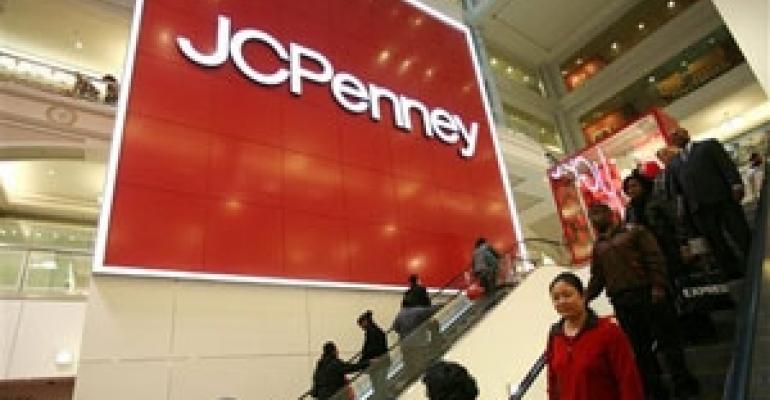Ron Johnson and team might have had the right idea in trying to shake up JC Penney’s image in the minds of consumers, but they attempted to change too much at once and are now paying the price, retail consultants say.

The former Apple exec announced a whole slew of new strategies in January, from streamlined pricing to the expansion of the store-within-a-store idea. But so far, instead of fixing Penney’s problems, the changes have had a disastrous impact on the company’s first quarter performance.
During the three months ended Apr. 28, same-store sales fell 18.9 percent. Total sales fell 20.1 percent. Internet sales went down 27.9 percent. And that’s during a period when department stores as a group posted a same-store sales increase of 3.4 percent, according to ICSC.
What’s more, according to the Consumer Equity Index (CEI) tracked by BIGinsight, a research service, JC Penney lost 5 percent of its preference share among female shoppers from April 2011 through April 2012, while Macy’s increased its share by 43 percent and Kohl’s by 14 percent.
JC Penney’s largest shareholder Bill Ackman has told news outlets that he’s confident the turnaround will prove successful—it will just take time for consumers to recognize and adapt to a new JC Penney’s.
Others in the retail industry, however, point out that Johnson has been in too much of a rush, unveiling too many changes at the same time, confusing both employees and customers. In a business where so much depends on brand equity, that’s a dangerous move.
“The way you turn around a retail company is evolutionary, not revolutionary,” says Howard Davidowitz, chairman of Davidowitz & Associates Inc., a New York City-based retail consulting and investment banking firm.
“These hedge fund guys are very smart people, but in managing a retail enterprise with a huge number of employees, you have to have an understanding of how long things take. I agree they’ve got excessive promotions. I agree their store experience can be improved. I agree that the stores are cluttered. But I would test a lot of their ideas first because maybe the customers like cluttered stores.”
Timing is everything
It’s a given that in a market where department stores face so much competition from online sales channels JC Penney’s management had to try some new strategies to derive value from its brick and mortar holdings, says Adrian Weidmann, principal with StoreStream Metrics, a business consultancy. To that end, exploring ideas such as adding stores-within-a-store makes sense because it creates a novel experience for customers who are used to seeing the same things over and over again when they go to the mall.
Streamlining pricing was also a worthwhile idea since JC Penney had been doing so many promotions so often customers were losing track of what was going on sale when, Weidmann says.
“To Mr. Johnson’s credit, he and his team realized that if they didn’t shake it p and do something, they would drift away as a brand,” he notes.
The management’s greatest mistake has to do with execution, Weidmann and others say.
First, JC Penney is a publicly traded company and informing analysts that it was going to change drastically the way it does business put an unnecessary spotlight on the chain and made Wall Street eager to see quick results. Implementing those same changes gradually, without creating fanfare, might have made a better impression, Weidmann notes.
It would have also allowed management to test its ideas at a handful of stores first and roll them out company-wide after they have been proven to work, according to Davidowitz. That would have safeguarded JC Penney from losing its existing customers if the new strategies didn’t deliver desired results.
Instead, what happened was that a sudden departure from the experience people have come to expect from the retailer came as a shock to its most loyal shoppers, says Pam Goodfellow, consumer insights director with BIGinsight. This problem was compounded by the fact that in today’s environment, consumers have become picky about the price/quality proposition.
“Consumers are not just about price anymore. We’ve seen shoppers head more toward quality [of merchandise] and customer service,” Goodfellow says. “So with JC Penney going into this everyday low pricing strategy, they’ve really downgraded themselves in the eyes of consumers. When you think of that strategy it’s connected with Wal-Mart and Wal-Mart is a discount store.
“JC Penney is kind of in this grey area right now, where they are not really a discounter, but they are having a hard time maintaining themselves as a department store,” adds Goodfellow. “I just don’t think it was the right time for them to do such a drastic overhaul of their strategy. It took their shoppers by surprise and other shoppers don’t seem to really gravitate toward them as a result either. It just wasn’t the million dollar idea they were hoping it would be.”

